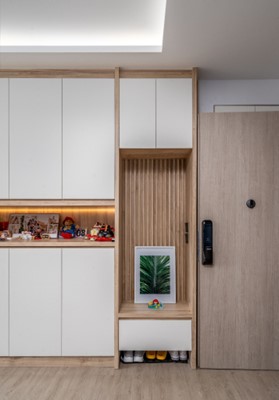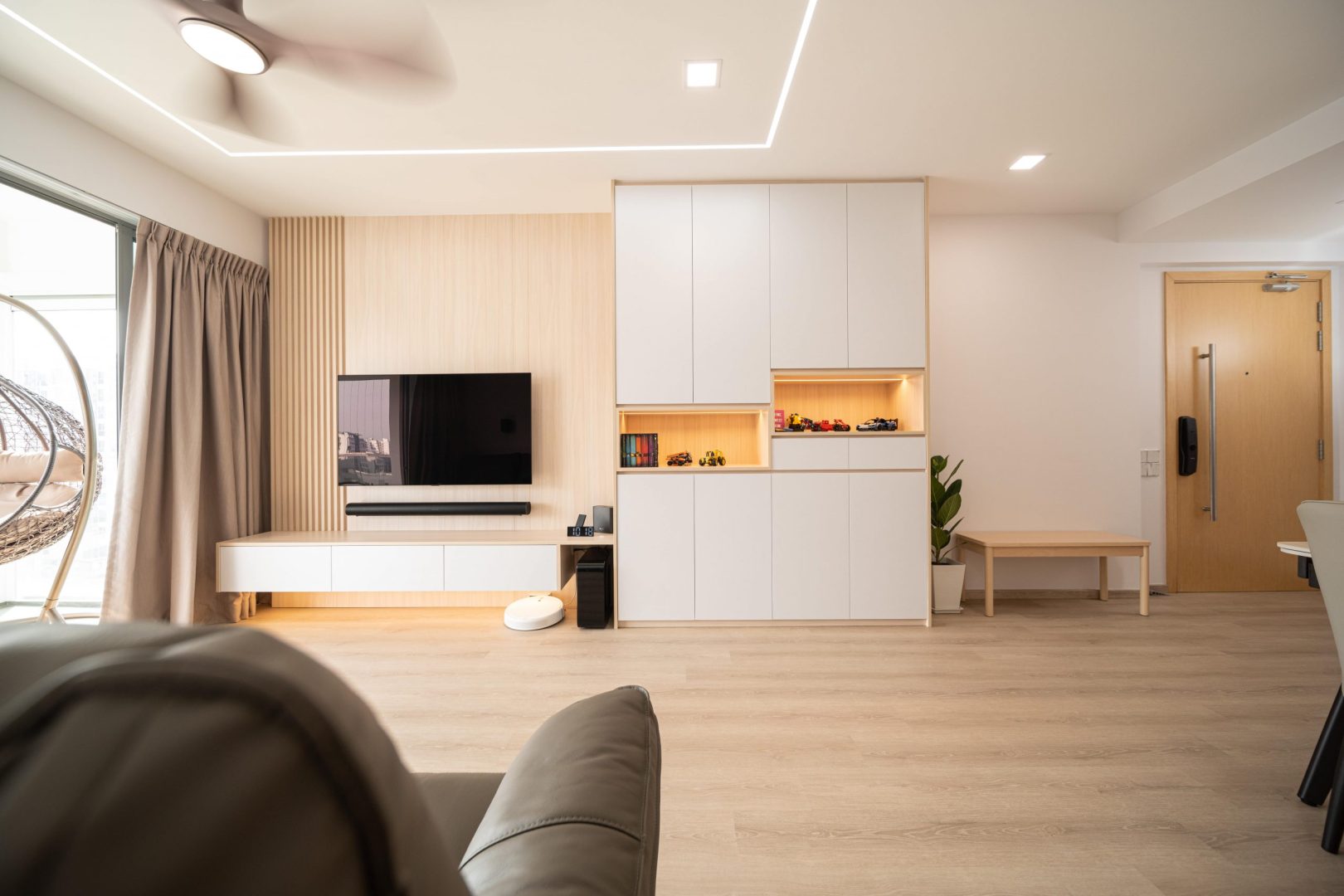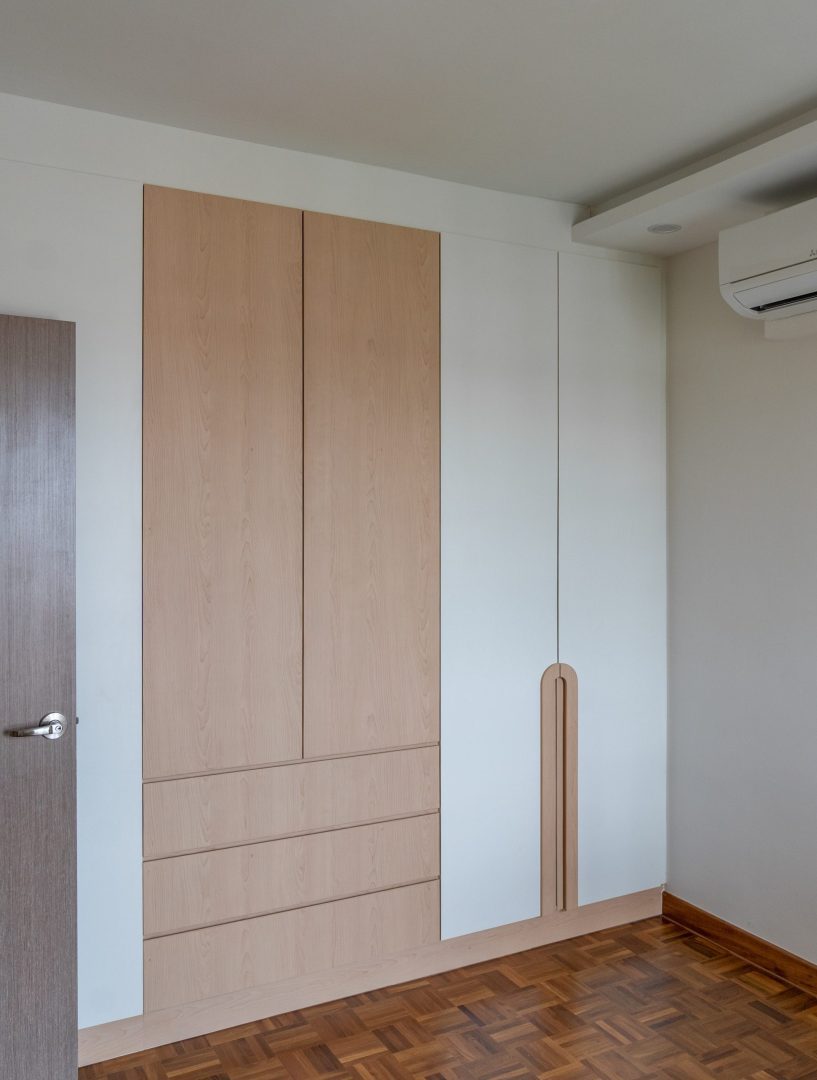5 Tips for Space Saving in Singapore5 Tips for Space Saving in Singapore
Due to the increasingly limited space in many HDB flats, Singaporeans struggle to find storage in their homes. Here are 6 ways to maximise your home space while keeping them organised and tidy.
1. Built-in furniture
Opt for built-in shelves, cabinets and wardrobes to better utilise the limited space available for better storage. Built-in seating (Examples: bench, sofa etc) can also be installed. Below features a built-in seating for the owners of this home to put on their shoes while also having some storage for their belongings.
Hence, some built-in furniture can also serve as a storage space. An example would be a platform bed on top of pull out drawers, which can store items you want out of sight. (shown below) Another can be a sofa with storage space below or at the ends, which can be a shelving alternative to store books and toys. These are great alternatives with better practicality, while also saving more space for other furniture.


2. Sliding doors
Installing a sliding door for your kitchen, study room or even wardrobes can help save more space in smaller rooms, as compared to a swinging door. As a swinging door opens outwards, it may not be practical in a tighter space. Moreover, when sliding doors are retracted out fully, they help create a broader space between the 2 rooms connected, allowing your home to appear bigger. Example is in the photo below.

3. Pull-out furniture
A great example is a pull-out dining table, which can be paired with portable and stackable chairs. It can be very versatile with its usage and be hidden away when not in use, giving you ample space for your home. This is especially useful for smaller households who rarely use the dining table.

4. Ceiling Space
Don’t forget that you can also make use of the ceiling space in your homes! A suspended shelf or cabinet adds a unique spin to an interior design as well as allows for more room in the house. Not to mention, you can store or display while making them accessible.

5. Two-tiered drawers
Are there instances when your drawers are filled up but there is still space due to the depth of the drawers? To maximise the drawer space, you can install a smaller drawer within the outer drawer! These drawers allow you to fill up the extra space left above all of your already stored items.




